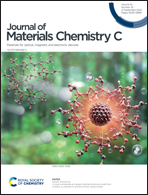Abstract
The control of non-radiative losses in light-emitting diodes (LEDs) based on metal halide perovskites is crucial to improve device efficiency. Recent studies have shown a correlation between lattice strain and electron–hole recombination. To consolidate the concept, we investigate how external pressure (strain) affects the crystal structure, electronic properties, point defect concentration, and luminescence efficiency of CH3NH3PbBr3. Relativistic first-principles calculations reveal enhanced Rashba splitting and Schottky defect disorder under compression, which produce a pronounced decrease in the electroluminescence peak energy and intensity in operating CH3NH3PbBr3 LEDs. The resulting model sheds light on the factors underpinning the intricate strain–property relationships in soft crystalline semiconductors.



 Please wait while we load your content...
Please wait while we load your content...